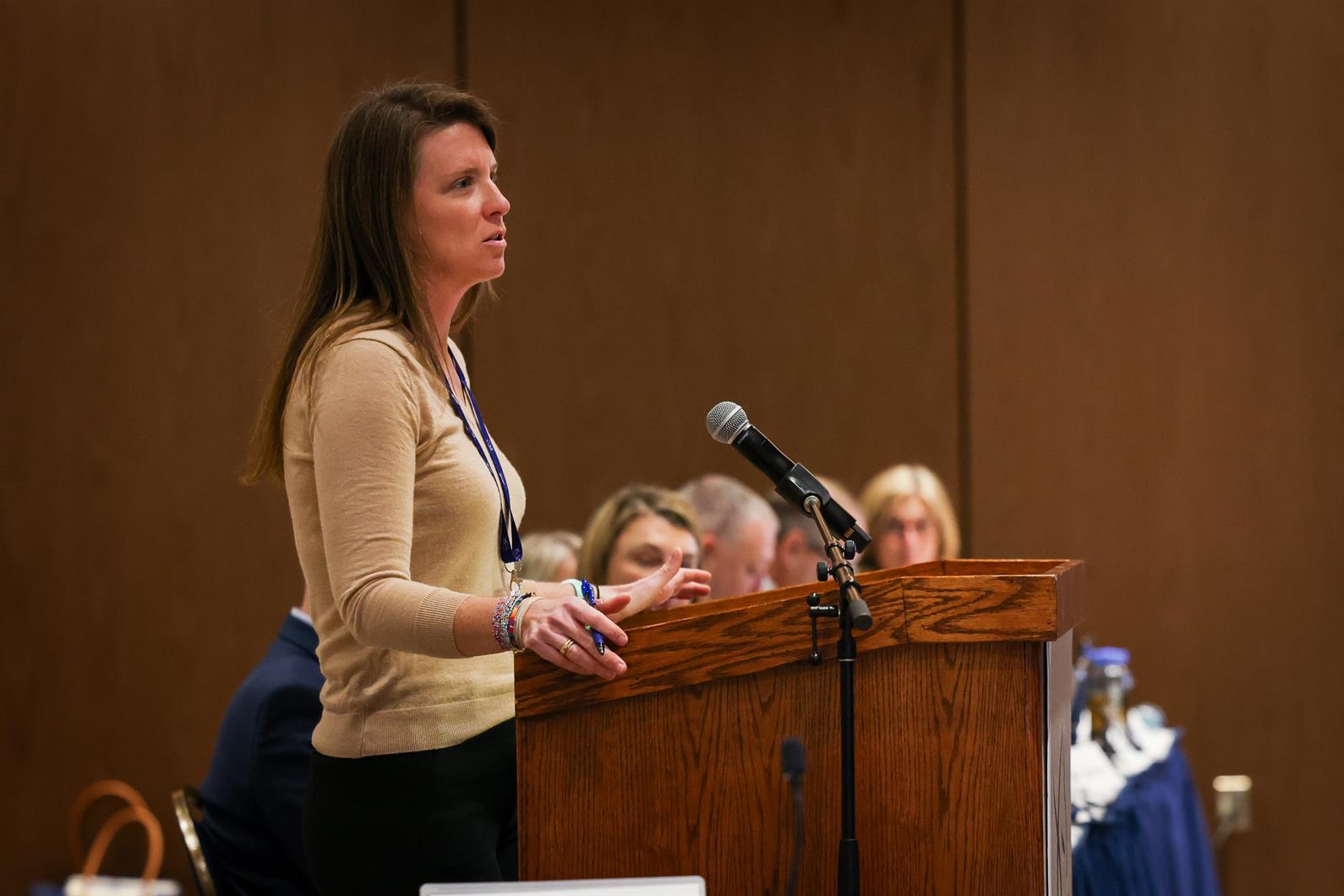Sarah Hamilton from strategic communications consulting firm Kivvit gave a presentation on social media to kick off Friday’s Workshop Sessions. She reviewed the basics, different platforms, strengths and weaknesses of social media, and best practices. Hamilton concluded by fielding questions from the audience for a thoroughly informative session.
Social media is a communication tool
“Social media is just one tool in a larger communications and marketing external relations plan that allows you to communicate your message to your audience,” said Hamilton. “It basically means you have an opinion, you have something to talk about, you have a story to tell—this is a way that you can do it.”
Hamilton said that social media offers powerful tools to help you reach your target audience and communicate with them. It is among the most public-facing communication channels. She noted the goal with social media is to make sure your message is in front of the right audience, in the right place, at the right time. Organizations should aim to be on offense rather than on defense.

“There’s an opportunity here via social media to talk about everything that you do, the passions that you have, and explain it. Usually when you are explaining, you are losing. But if you do it on the front end, you are on offense, so you are educating. You are talking about why you love horses and horse sports, why it is important, and why you want to spread that word to your followers and their followers.”
Keep social media basics in mind
Social media can accomplish reach and awareness, persuasion and consideration, and direct response. Hamilton explained social media basics, including:
- Understand your audience and know your voice
- Have clear outreach objectives
- Minimal budget and more impact
- Decide which tools to use and why
- Cross-platform integration and consistency
- Track results and plan for future outreach
Different social media platforms provide different opportunities
Hamilton provided an overview of social media platforms. Facebook has the largest user base and users tend to be baby boomers, Gen X, and millennials. It is a good platform for groups and organizing. Facebook is owned by Meta and offers the most data for advertising. Hamilton noted that one-third of Americans get their news on Facebook.
Also owned by Meta, Instagram is a vertical video-based platform with mainly millennials and older Gen Z users. The best content is photos, videos, and memes, and the best uses are influencer campaigns, product placements, educational content.
Hamilton pointed out one of the biggest takeaways from her talk. “If you remember one thing from this morning, just remember this—vertical video. Right now, that is king on any platform and any situation.”
LinkedIn is professional platform with users who are typically professionals and employers. The best content is professional news, and job seeking and/or searching.
Reddit is a community-driven platform in a forum format, which is often considered the “original internet.” The user profile is broad, and the best content can be anything.
Snapchat is a “self-destructing” content platform, though Hamilton warned that no content is ever completely gone from the internet. The users are a younger audience, and the user base is not growing fast. The best content is vertical photos and videos.
TikTok, a short vertical video platform, is currently the most popular social media platform. Users tend to be younger, but it is growing in popularity among other demographics. It is largely influencer-driven, and the best content is videos that feature dancing, comedy, singing, cooking, DIY home improvement, product features, and much more.
Twitter is a conversation platform that is heavy on opinions and news of the day. Users tend to be journalists, politicos, news of the day fans. The best content is short, snappy, and has a voice and point of view.
YouTube is a video platform and content hub that is a perennial powerhouse. Anyone can be a user, and the best content are how to videos. It is owned by Google and also largely influencer driven. Hamilton noted that having a YouTube channel and making quality videos is time intensive. Also, she noted that this platform is mostly horizontal video, unlike other platforms.
Strengths and weaknesses of social media
Hamilton explained that social media has both strengths and weaknesses for people to consider when creating content.
Strengths of Social Media:
- It allows you to join a conversation that is already happening.
- Low-level engagement is easy.
- Followers and users become broadcasters of your message.
- It reaches people who are not a part of your network yet.
Weaknesses of Social Media:
- There is not as much room to get a message across on most platforms.
- Social media has a shorter lifespan.
- The reach is limited, even among your own followers.
- It is not always great for lead generation or direct conversions.
- Everything is very public.
Best practices for using social media
Hamilton reviewed best practices for people to consider with their social media use:
- Understand your goals.
- Have a good grasp of your tone of voice.
- Authenticity, relevancy, and consistency are key.
- Don’t overcommit to sharing content.
- Don’t get burnt out with posting.
- Mix up your content with video, images, and graphics.
- Include a hook, a call to action, and a link in posts.
- Don’t overdo it on hashtags—two is enough.
- Create a sense of community, if that aligns with your goals.
- Stress a sense of urgency, if necessary.


